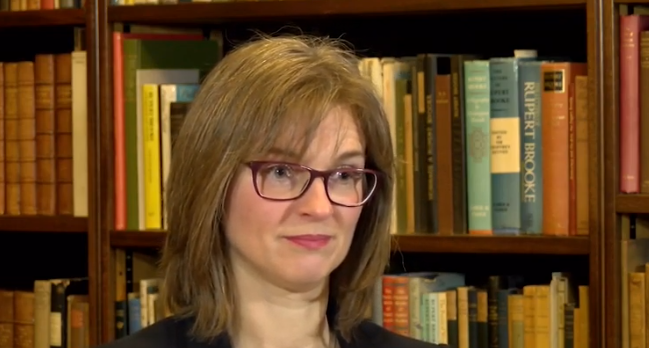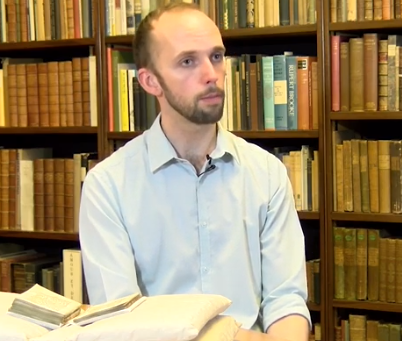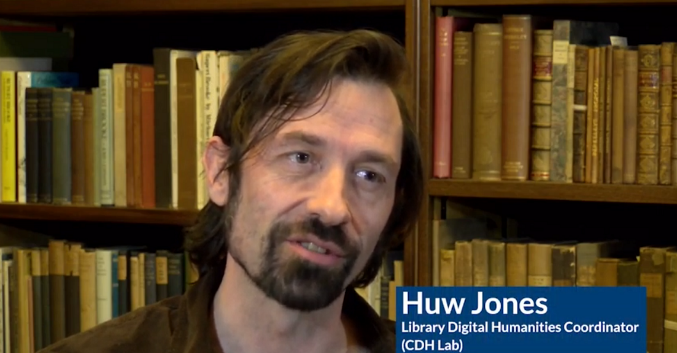Spotlight: Medieval Manuscripts in the Digital Age
This article is part of a series describing the outcomes of the Technology-Enabled Learning Programme projects (2019-20).
The opportunity to learn more about (what at first seems) a different field of Manuscript studies was enlightening and empowering. I feel that I now have an extremely valuable skillset that I can use not only in my own research efforts, but which will make me a more desirable job candidate.
- MPhil student 2020 (end of course survey)
Medieval Books and Texts in a Digital Age
Medieval Manuscripts in the Digital Age is a new optional MPhil unit run by the Faculty of English in collaboration with Cambridge University Library. It is a blended learning course that makes best use of Moodle to facilitate pre-lesson exploration and post-lesson consolidation and peer review. As the first of its kind in the Faculty of English, the course is effectively a prototype for how departments could approach work in the Digital Humanities.

On the surface, the object was simply to teach students to apply the principles of the Text Encoding Initiative (TEI), the current accepted standard for encoding digital artefacts, in the creation of digital descriptions of the manuscripts on which their research was based. However, there were also more complex motivations at work, designed to push students to question and reflect upon their approach to describing medieval manuscripts.

The motivation

Digital Humanities is a growing field and even the seemingly unlikely candidate, medieval manuscript studies, can both benefit from and contribute greatly to it. The course team comprised Dr Orietta Da Rold, University Lecturer in the Faculty of English, and Dr James Freeman, Medieval Manuscripts Specialist, and Huw Jones, Head of the Digital Library Unit, both from Cambridge University Library. They saw the need to prepare students for a future of manuscript research in a digital age, by enabling them to contribute to and influence potential directions of research in their field, gaining valuable, employable skills in the process.
The team were keen to explore not only the affordances but also the influence of technology on research:
"The project will be a close combination of manuscript features and the technologies used to describe them, and an important aspect of the course will be to examine the effect of technology on the process of manuscript description - not only in encouraging a more analytical approach, but also in anticipating future uses of the description as a dataset rather than just for reading."
- original submission to the Technology-Enabled Learning Programme
It seemed apt to do this while also exploring the affordances of technology on teaching and learning, by delivering the course in blended mode. As Orietta says, "...[the] blended learning course demonstrates that innovation in teaching is key to the constant relevance of my discipline". To achieve this, the team worked with Deirdre Cijffers of Online Learning Services at Cambridge University Press (CUP), who guided the process and brought creative pedagogical perspectives to the task at hand.
The process

The focus throughout was strongly on what we wanted the learners and the teacher to gain from the experience. For learners, it was the ability to encode medieval manuscripts for digital publication, to reflect on and update their research questions based on the systematic, future-proofed approach required for encoding, and to develop skills in sharing, reviewing and updating their work in response to feedback. The ultimate 'product' of the learning experience would be an artefact suitable for publication on the Digital Library, the learner's first contribution to the Academy and the continual incremental expansion of Cambridge University Library's dataset of digital manuscripts.

In a learning design process called Backwards Design, early on we articulated the outcome of "using TEI to create a digital version of their chosen manuscript for publication on the Digital Library". We then decided that to gauge whether that had been achieved we needed the students to produce a publishable digital manuscript description. To enable this, we approached the descriptions from four different thematic angles with the students, spending one 'cycle of learning' on each. Over the course of each cycle we raised for discussion aspects of digital manuscript description that were potentially problematic in the context of that theme, exploring possible solutions and clarifying what coding might be required. Over the course of the learning journey, the learners built up all four layers of their manuscript description, to be reviewed and updated in preparation for publication at the end of the course.
The result
"This course enabled that strategic alliance often advocated by the School and University, the Faculty of English, the Digital Unit and CUP working together within our own competence to deliver something quite unique."
- Orietta

The result is an eight-week blended course that allows students time to prepare for class by thinking about the main concepts in a particular area of manuscript description through videos, reading and reflection in Moodle. In class, students are primed to find out more and ask pertinent questions about encoding. Together they analyse an encoded example and discuss the decisions they make as digital researchers, and how those decisions affect the future of manuscript research. Afterwards, they take those same principles and apply them to their own manuscript, create a marked-up description in XML that they then share with their peers for review and feedback.

"The course was very successful and the students seemed very engaged. The mix of the physical and digital worlds really seemed to come to life for them, and I was impressed at how well they picked both the practical aspects of coding and the methodological issues thrown up by using TEI for manuscript descriptions."
- Huw
Before-and-after surveys relating to the learning outcomes showed a clear increase in confidence. Students reported satisfaction with the course when asked in person. We additionally surveyed students at the end of the course: responses showed clear satisfaction with all elements of the course, from learning materials to peer review, and that the experience had exceeded expectations.
"The consolidation was the key element for me in helping me to become proficient in TEI by practical application, and it was at this stage where you really figure out what questions you still have by attempting to complete your own example."
- MPhil student, end of course survey
The course was ultimately assessed by essay as per the regulations of the Faculty, but all students have shared their descriptions and been successfully reviewed by their peers. Unfortunately the current situation has prevented us getting this work onto the Digital Library yet, but this will be pursued further when possible.
The future
Having given the content and learning experience serious and systemic thought before launch, this team are in a very strong position to deliver the course again effectively and with a minimum of stress, even with the current limitations on in-person teaching. The strength of the digital component as a part of the blended learning experience means that only minor adaptations are likely to be required to satisfy safety needs in the context of face-to-face teaching.
Author
Deirdre Cijffers

Deirdre Cijffers is the Lead Course Designer in Online Learning Services at Cambridge University Services. OLS are the core team leading the instructional design side of the Technology-Enabled Learning Programme.
Cambridge Teaching & Learning Newsletter vol. 1 (issue 6) August 2020
